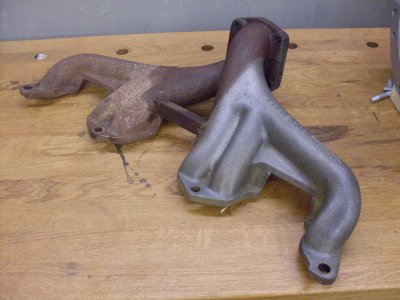- Joined
- Sep 28, 2013
- Messages
- 4,318
thanks for the tips everyone, they're very much appreciated! I took the chuck out last night and all the stuff that I thought was left on it just wiped right off. As Bill said, the finish was a dull grey, so I'll give it a whizz with a scotchbright pad and some Mothers to pretty it up. It wasn't heavily rusted, but it did clean up very nicely and came apart easily too, once I figured out how to get it apart.
I'm going to keep my eyes open for some steel plate (or even graphite plate!) next time I'm at the scrap yard and work on a better connection from the +ve lead to the plate/ rebar as it's a bit ghetto right now. I have wirebrushed the rebar and I'll keep an eye on it as I do more electrolysis. Good tip about the sacrificial piece of steel to clean off the anodes, I'll remember that.
Overall I'm really pleased with how it's working - does a good job, costs peanuts and I can leave it to do its thing while I'm doing something else I'm planning on having this going 24/7 with different bits as I take them off the lathe - that way I'll have a constant stream of stuff stripped, stuff being undercoated and stuff being topcoated. It shouldn't take long to get it back together if I can keep that up!
I'm planning on having this going 24/7 with different bits as I take them off the lathe - that way I'll have a constant stream of stuff stripped, stuff being undercoated and stuff being topcoated. It shouldn't take long to get it back together if I can keep that up!
I'm going to keep my eyes open for some steel plate (or even graphite plate!) next time I'm at the scrap yard and work on a better connection from the +ve lead to the plate/ rebar as it's a bit ghetto right now. I have wirebrushed the rebar and I'll keep an eye on it as I do more electrolysis. Good tip about the sacrificial piece of steel to clean off the anodes, I'll remember that.
Overall I'm really pleased with how it's working - does a good job, costs peanuts and I can leave it to do its thing while I'm doing something else


